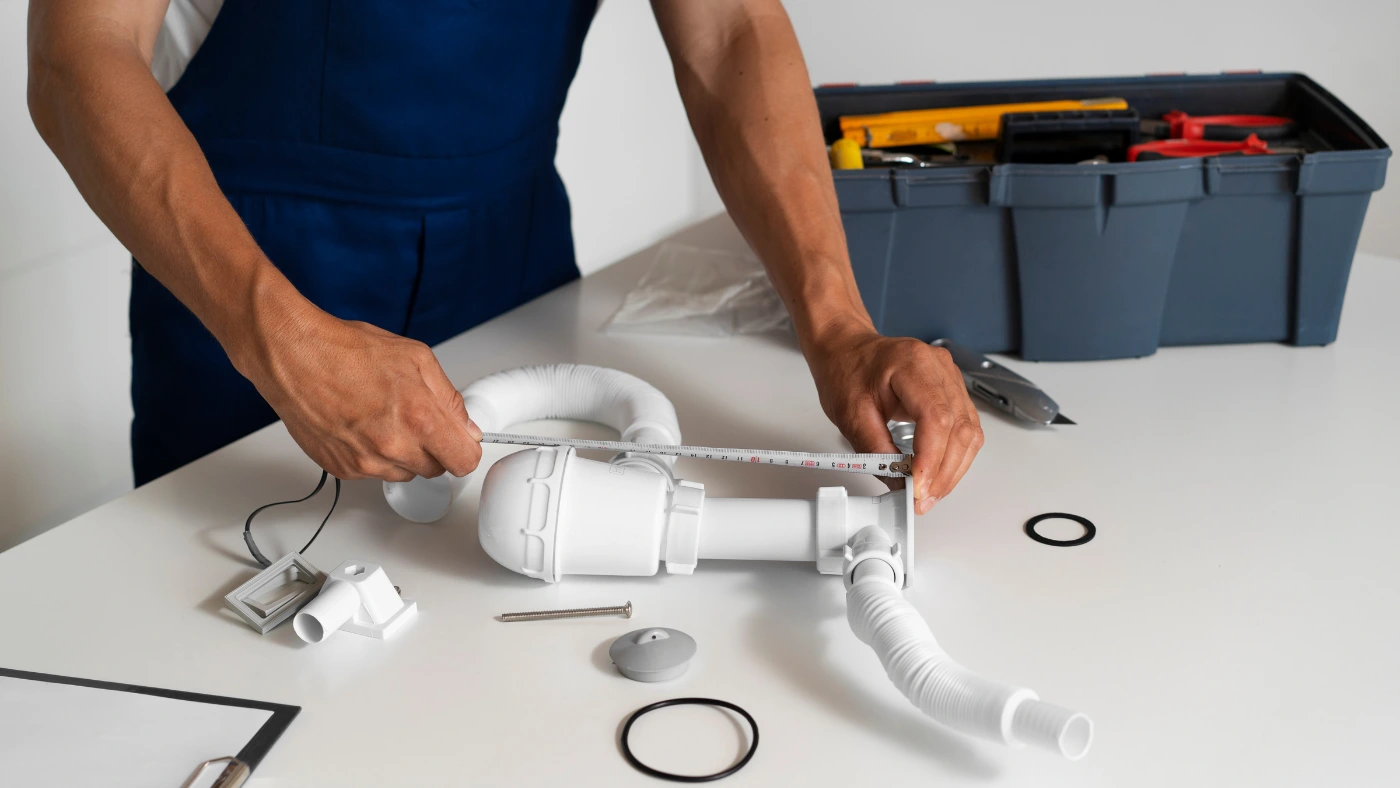Want to win more jobs with less effort?
Grow your business and send quick quotes with our home service software.

On July 4, 2025, President Trump signed into law the “One Big Beautiful Bill Act,” a comprehensive legislative package addressing several policy areas, including national defense, infrastructure, immigration, healthcare, and taxes. In this blog, we’ll exclusively focus on the tax code changes within the bill, highlighting how they directly impact small businesses and home service Pros. Please note that every “How you could feel it” scenario is based on a business owner in the 22% federal bracket. Your individual experience may differ.
If you’d like to dive deeper into how these changes could affect you, check out this livestream discussion with Housecall Pro’s accounting and tax experts, Morgan Knox and Adam James [linked here].
- How the bill impacts your business
- Bonus depreciation: Immediate write‑offs restored
- Section 179 expensing limit raised significantly
- Clean‑energy credits: Clock runs out after 2025
- Important personal tax changes
- Bigger standard deduction
- Increased SALT deduction (temporarily)
- Overtime and tips deduction
- Deducting personal car‑loan interest
- Child tax credit permanently boosted
- “Trump Accounts” for newborns
- Lifetime estate‑tax exemption jumps in 2026
- The bottom line for your business
How the bill impacts your business
Qualified business income deduction permanently allowed
The 20% write‑off for sole proprietors, partnerships, and S‑corps was scheduled to vanish after the 2025 tax year, but the Act erases that sunset clause entirely. In addition to making the break permanent, Congress added a $400 “micro‑business floor,” so even owners with only a few thousand dollars of profit still get some benefit. The income thresholds that begin to chip away at the deduction rise roughly 10%, giving slightly larger shops more breathing room before phase‑out starts.
Because the rule is now open‑ended, banks and buyers can value your company without building in a potential tax‑cost spike after 2025.
How you could feel it
You show $120,000 of profit from your LLC. Automatically, 20% is deductible, dropping your taxable income by $24,000 and trimming this year’s tax by about $5,280 (22% of $24,000).
Bonus depreciation: Immediate write‑offs restored
Bonus depreciation had been phasing down, 80% in 2025, 60% in 2026, and so on, until Congress slammed on the brakes and reset the rate to a full 100%. The rule generally applies to original-use assets, but may apply to some purchases that meet certain requirements.
Unlike Section 179, there’s no annual dollar cap or business‑income limit; if you want to wipe out every penny of profit with equipment purchases, you can.
How you could feel it
You purchase a $60,000 delivery van. The entire $60,000 deduction lands on the current return, saving about $13,200 in federal tax (22% of $60,000).
Hear more about bonus depreciation from Morgan and Adam below. Learn how Housecall Pro can help with your bookkeeping and tax needs (here).
Section 179 expensing limit raised significantly
Section 179 is the Swiss Army knife of write‑offs, letting you choose how much of each asset to expense immediately and how much to depreciate over time. The Act doubles the annual cap from $1 million to $2.5 million, and the phase‑out doesn’t begin until total equipment purchases hit $4 million. Both figures are indexed for inflation going forward.
Unlike bonus depreciation, you must have enough taxable business income to cover a 179 election, but you decide exactly how big that election is. This flexibility is perfect when you want to drive taxable income to zero, but not into a loss that might limit other credits or affect loan covenants.
How you could feel it
You expect $100,000 of taxable profit but want to stay out of a higher bracket. You elect to expense $40,000 of new machinery under Section 179 and depreciate the rest. That election alone trims your 2025 bill by about $8,800 (22% of $40,000) without pushing you into a loss that could complicate lending ratios.
Clean‑energy credits: Clock runs out after 2025
The 30% residential clean‑energy credit for solar, heat pumps, and battery storage now ends on December 31, 2025, seven years earlier than under prior law. But there’s no phase-out. If you miss the date, the credit is gone.
On the commercial side, clean‑vehicle credits for electric cargo vans and light trucks disappear for vehicles purchased after September 30, 2025.
How you could feel it
You’re quoting an $18,000 heat‑pump install to a homeowner. If the job closes in 2025, they still qualify for a $5,400 credit, making your pitch an easier sell. Delay until 2026, and that incentive vanishes.
Hear how you can use the clean-energy phaseout to your advantage from Morgan and Adam below.
Important personal tax changes
The Act doesn’t just impact your business taxes. Check out all the personal tax changes you need to know below.
Bigger standard deduction
The baseline deduction for taxpayers who don’t itemize rises roughly 5% for 2025—about $15,750 for single filers and $31,500 for joint filers—and, crucially, the bump is permanent with annual inflation indexing. Seniors age 65 and older get an extra $6,000 on top of the new standard deduction, but that senior boost is temporary and sunsets after 2028.
For many middle‑income households, these amounts exceed the usual itemized write‑offs, meaning you’ll file a simpler return and track fewer receipts. Higher deductions also shrink your adjusted gross income (AGI), which can unlock or enlarge other tax breaks tied to AGI.
How you could feel it
You finance a $50,000 pickup truck at 8% interest. First‑year interest runs roughly $4,000; deducting it cuts your tax by about $880 (22% of $4,000).
Increased SALT deduction (temporarily)
The personal cap on state and local tax deductions (SALT) leaps from $10,000 to $40,000 for tax years 2025 through 2029. The bigger cap is especially valuable for individuals in high‑tax states who pay large property‑tax bills on their homes in addition to state income tax.
However, the provision is temporary. Congress set an automatic snapback to $10,000 in 2030. So, planning ahead to bunch taxes into the high‑limit years can magnify your benefit. Note that SALT paid directly by an S‑corp or partnership at the entity level stays fully deductible at the business level and flows through outside the personal cap.
How you could feel it
You pay $25,000 in state and local taxes. Under the old $10,000 cap, you lost $15,000 of deduction; now you keep it, saving about $3,300 (22% of $15,000).
Overtime and tips deduction
For 2025–2028, up to $12,500 of overtime pay (double for joint filers) and $25,000 of tip income each year can be excluded from federal income tax. Congress wrote the rule so the break stacks on top of either the standard deduction or itemizing, meaning virtually every worker who earns overtime or tips gains something.
Payroll taxes remain untouched, which means you and the employee still pay Social Security, Medicare, and unemployment on the full wage. Employers must continue normal withholding and Form W‑2 reporting, but employees will subtract the qualifying amounts on their 1040 when they file.
How you could feel it
You log $10,000 of overtime this year. The above‑the‑line deduction lowers your income tax by about $2,200 (22% of $10,000), but FICA still comes out of each paycheck.
Deducting personal car‑loan interest
If you finance a personally titled car, truck, or van that was assembled in the United States, you may now deduct up to $10,000 of loan interest per year through 2028. The deduction phases out for high‑income taxpayers (roughly $100,000 for single filers, $200,000 for joint filers), mirroring the thresholds used for the new overtime and tips break.
Vehicles purchased directly by your business were already eligible for an interest deduction, so this change levels the playing field for owners who prefer, or must, keep a vehicle in their own name. Remember to keep good mileage logs. If the IRS asks, you’ll need to show that the vehicle is used primarily for business purposes.
How you could feel it
This year, you paid $8,000 in interest on your new car or truck. That’s now deductible, saving you $1,760 (22% of $8,000).
Child tax credit permanently boosted
The child tax credit increases to $2,200 per child and will adjust for inflation annually, providing a reliable offset against future tax hikes. Lawmakers closed a loophole by requiring that both parents have Social Security numbers to claim the credit, a change aimed at preventing fraudulent filings.
The refundable portion remains $1,400, so lower‑income families can still get money back even if they owe no tax. Because the credit is dollar‑for‑dollar, every additional $100 in credit reduces your tax liability by the same $100.
How you could feel it
You have two children under 17. The $200‑per‑child boost means $400 more off the tax bill.
“Trump Accounts” for newborns
Every baby born from 2025 through 2028 receives a federally funded $1,000 seed contribution into a custodial “Trump Account.” Parents, grandparents, and others can contribute up to $5,000 per year, and the funds grow tax‑deferred, much like a Roth IRA, with tax‑free withdrawals for education, buying a first home, or starting a business after age 18.
Investment choices are limited to low‑cost index funds overseen by the Treasury, and early non‑qualified withdrawals face income tax plus a 10% penalty.
How you could feel it
Your child is born in 2026. You leave the $1,000 untouched in a low‑fee U.S. stock index fund earning an assumed 7% annual return. By age 18, that one‑time seed could grow to roughly $3,400, all from government money. Add your own contributions and the nest egg compounds even faster.
Lifetime estate‑tax exemption jumps in 2026
Starting January 1, 2026, the amount you can transfer tax‑free during life or at death rises to $15 million per person, $30 million for married couples, indexed annually. This permanently locks in what would otherwise have been a drastic cut when the prior law’s $12.9 million exemption was set to expire.
Family‑owned service companies often have a large share of their value tied up in equipment and goodwill; the bigger shield makes it less likely your heirs will need to sell assets just to pay estate tax. Gifting strategies, like placing vans or shop real estate into trusts, still matter, but the urgency level drops for most owners.
How you could feel it
Your assets, including your company, are valued at $10 million. Under prior law, roughly $5 million of that would have been exposed to a 40% estate tax. The new limit shields the full amount, avoiding a potential $2 million tax hit for your heirs.
Get a quick run-down of the tax components of the Act in under three minutes.
The bottom line for your business
These changes redirect thousands—in some cases, tens of thousands—of dollars per year back to well‑run small businesses and their owners. Housecall Pro Accounting keeps your books audit‑ready, and our Tax Advisors can tailor a game plan that fits your crew size, state taxes, and equipment schedule. [Learn more]






